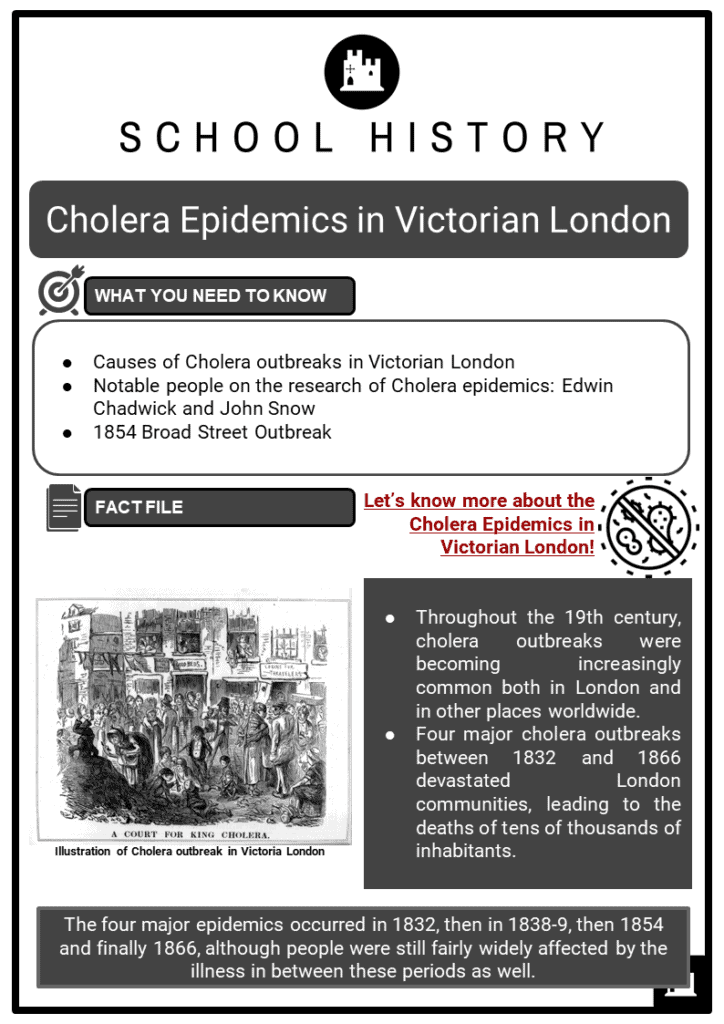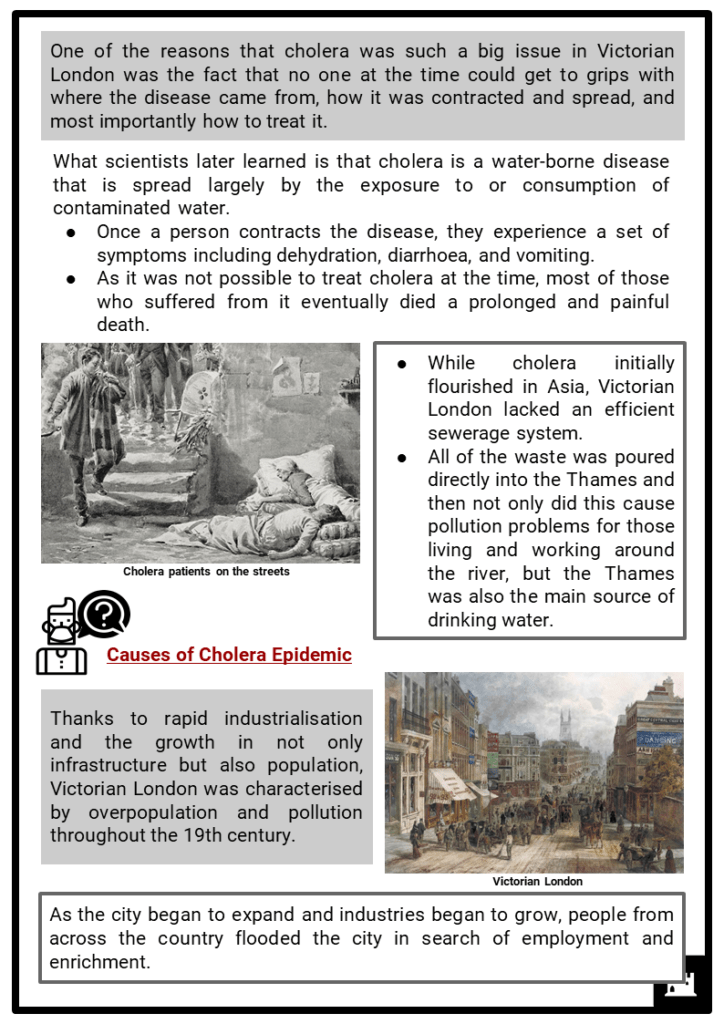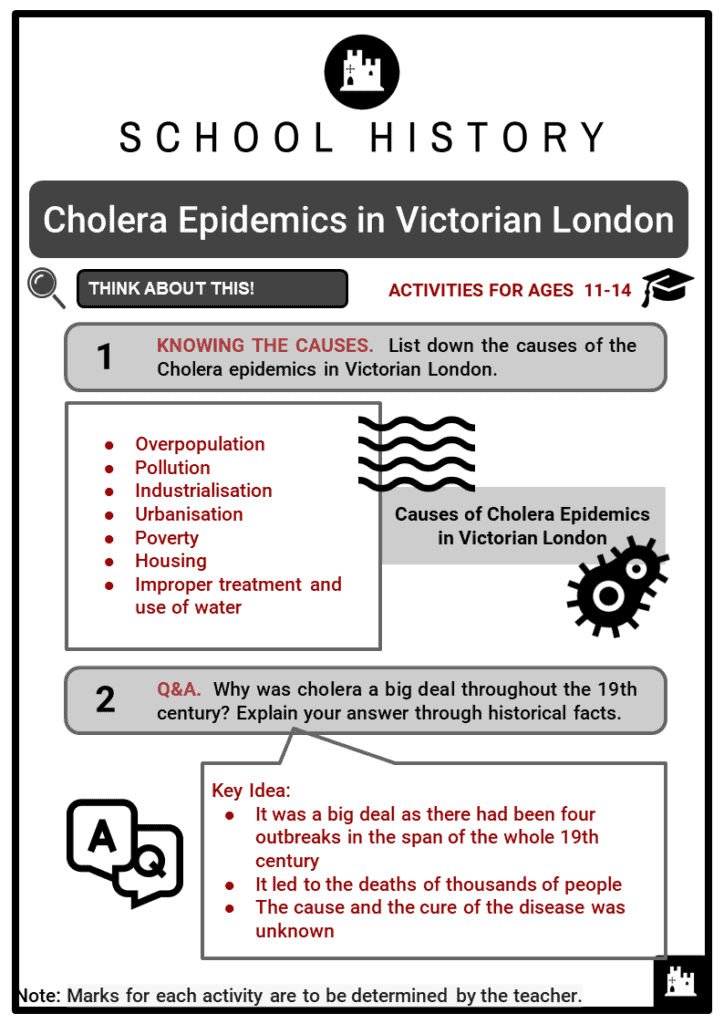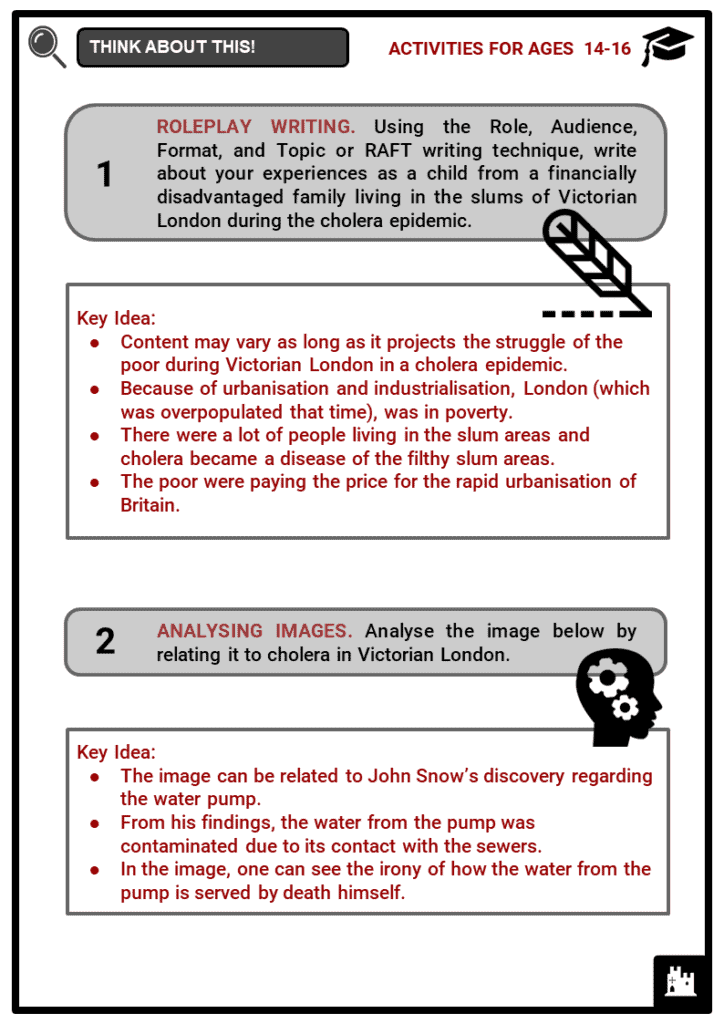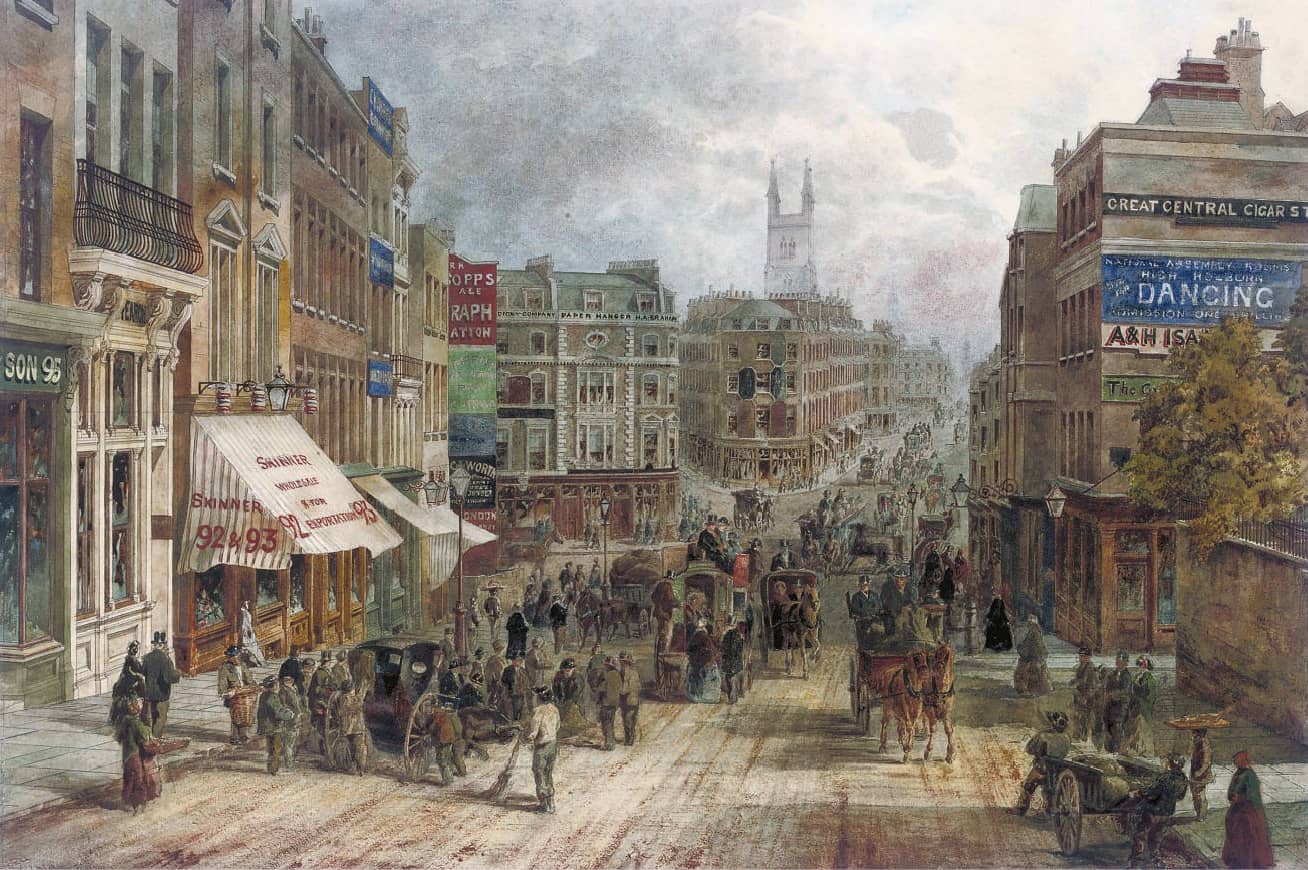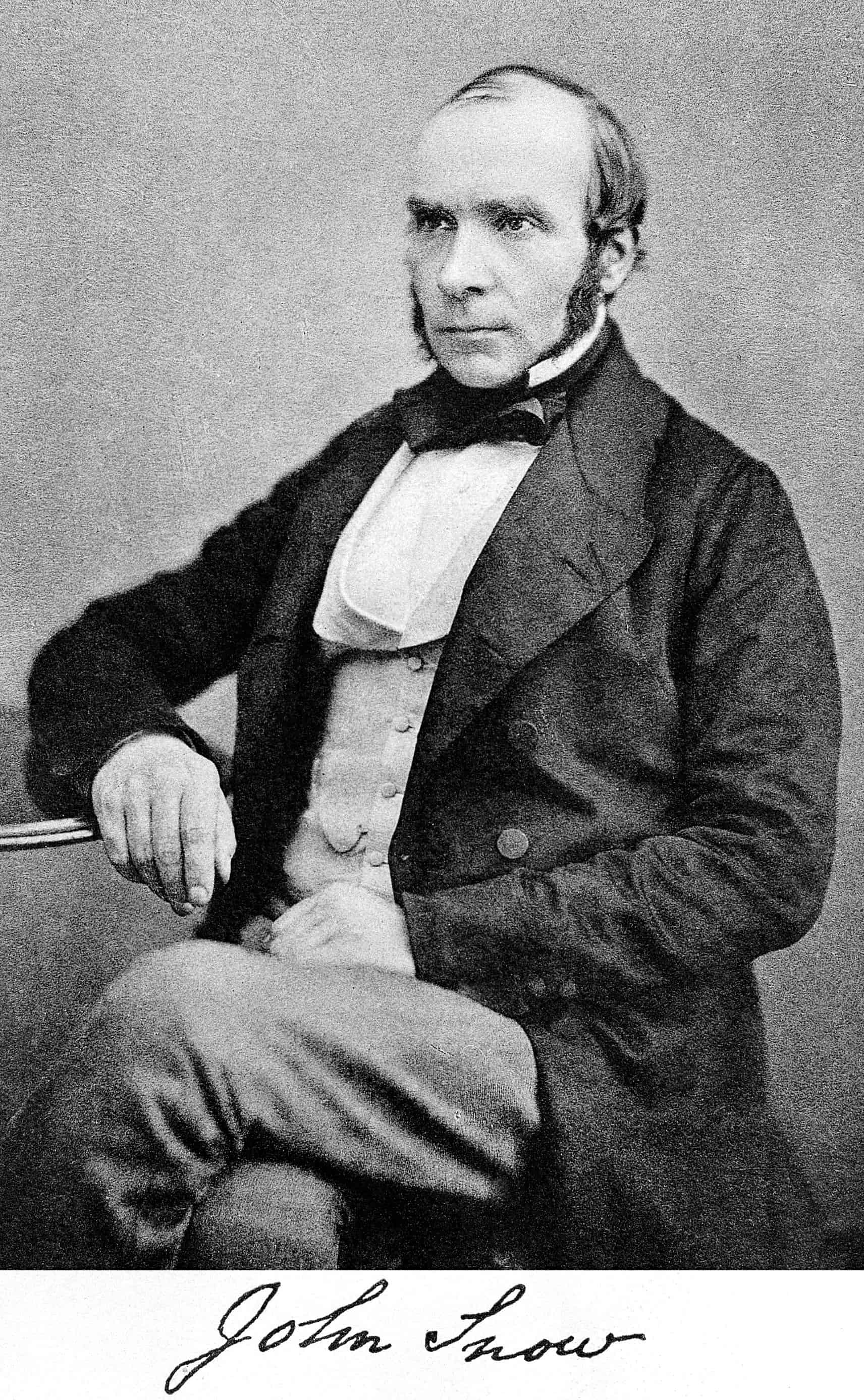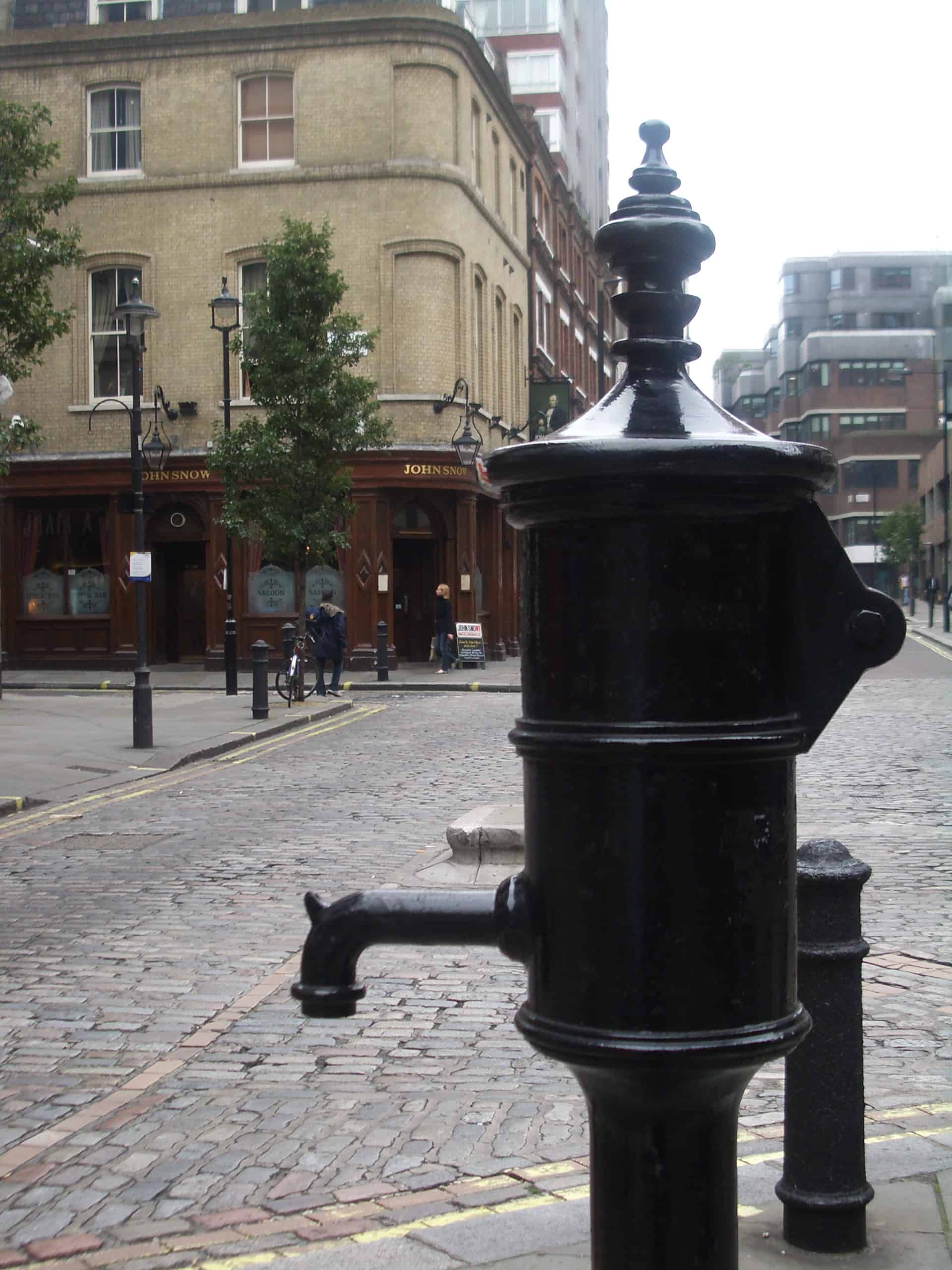Download Cholera Epidemics in Victorian London Worksheets
Do you want to save dozens of hours in time? Get your evenings and weekends back? Be able to teach Cholera Epidemics in Victorian London to your students?
Our worksheet bundle includes a fact file and printable worksheets and student activities. Perfect for both the classroom and homeschooling!
Table of Contents
Add a header to begin generating the table of contents
Summary
- Causes of Cholera outbreaks in Victorian London
- Notable people on the research of Cholera epidemics: Edwin Chadwick and John Snow
- 1854 Broad Street Outbreak
Key Facts And Information
Let’s know more about the Cholera Epidemics in Victorian London!
- Throughout the 19th century, cholera outbreaks were becoming increasingly common both in London and in other places worldwide.
- Four major cholera outbreaks between 1832 and 1866 devastated London communities, leading to the deaths of tens of thousands of inhabitants.
- The four major epidemics occurred in 1832, then in 1838-9, then 1854 and finally 1866, although people were still fairly widely affected by the illness in between these periods as well.
- One of the reasons that cholera was such a big issue in Victorian London was the fact that no one at the time could get to grips with where the disease came from, how it was contracted and spread, and most importantly how to treat it.
- What scientists later learned is that cholera is a water-borne disease that is spread largely by the exposure to or consumption of contaminated water.
- Once a person contracts the disease, they experience a set of symptoms including dehydration, diarrhoea, and vomiting.
- As it was not possible to treat cholera at the time, most of those who suffered from it eventually died a prolonged and painful death.
- While cholera initially flourished in Asia, Victorian London lacked an efficient sewerage system.
- All of the waste was poured directly into the Thames and then not only did this cause pollution problems for those living and working around the river, but the Thames was also the main source of drinking water.
Causes of Cholera Epidemic
- Thanks to rapid industrialisation and the growth in not only infrastructure but also population, Victorian London was characterised by overpopulation and pollution throughout the 19th century.
- As the city began to expand and industries began to grow, people from across the country flooded the city in search of employment and enrichment.
- These incoming workers and their families were arriving into a city that was not yet prepared to handle the industrialisation itself, let alone the exponential increase in population numbers.
- One of the key challenges was housing.
- The vast majority of people lived in extreme poverty and so while cholera was initially a disease of the slums of India, in the 19th century it had become the disease of the equally filthy slums of London.
- The poor were, in other words, paying the price for the rapid urbanisation of Britain.
- They lived in overcrowded and decaying homes and slums which stank from the lack of proper sewerage which meant that their own waste surrounded them constantly.
- The East End of London, in particular, was known as the area of ‘the working poor’ and suffered the most as it surrounded the docklands which produced the largest amounts of waste.
- During the Victorian era, the child mortality rate was as high as 20%.
- The life expectancy of an average worker in the area was just 19 years.
- More so than overpopulation or even poverty, the cholera epidemics of Victorian London were caused by the improper treatment and use of water – be it waste or freshwater.
- Urbanisation had been quicker than the development of appropriate sewerage and sanitary arrangements, which ultimately polluted the water to such an extent that it made 19th century London a perfect stage for cholera epidemics.
Notable People
- The cholera epidemics of Victorian London led to serious concerns and fear which in turn led to the development of public health in Britain.
- In other words, the widespread deaths of the poor and the fear of the elites that cholera outbreaks would eventually reach them too led to the very first investigations into living conditions in London.
- The two most important individuals in the fight against cholera epidemics in Victorian London were the scientist John Snow and the researcher Edwin Chadwick.
- Edwin Chadwick was a social reformer in Victorian England who had been commissioned to inquire into the state of public sanitation in order to determine whether it was linked to the spread of diseases, and if so how.
- In 1842 he published his report, “The Sanitary Conditions of the Labouring Population” which was able to trace clear links between poor living conditions and diseases and at the end of which he called for urgent action.
- As the very first Sanitary Commissioner of London, he sought to change things for the better but was unfortunately guided by a false theory – the miasma theory of disease.
- He mistakenly fought against foul air thinking it had caused the spread of disease.
- In order to eliminate the foul air he facilitated the rapid removal of human waste – however, at the time this had only led to a greater flow of raw sewage into the Thames which only further contaminated London’s water supply.
- Lucky for him, John Snow had been researching cholera too.
- In the 19th century, John Snow was a physician and a leader in the development of anaesthesia and medical hygiene.
- Today, history looks back on him as one of the fathers of epidemiology.
- The initial theory around cholera outbreaks posited that it was being caused by a miasma which was a noxious form of “bad air”, also to some known as night air.
- The miasma theory had been accepted for years until John Snow, who was sceptical of it, used instead the Germ Theory of Disease pioneered by Girolamo Fracastoro and later used in the science of bacteriology by Louis Pasteur.
- Snow came up with the idea to use the theory by speaking to local residents and mapping cholera outbreaks across the city.
- This way he was able to discard the miasma theory and to eventually prove that there was a link between water and cholera.
- He had already been researching links between water supply and cholera when another epidemic struck in 1854.
- This time he was able to map the disease around a single sewer pipe and as such confirm his theory.
The 1854 Broad Street Outbreak
- In 1854 Broad Street in the Soho district of the City of Westminster became the scene of yet another cholera epidemic, the third major one in a mere two decades.
- By the time the illness had broken out, Dr John Snow had already begun arguing that cholera was spread by water.
- But it was the 1854 outbreak that really helped him prove that he was right.
- The outbreak has been remembered as particularly savage, having killed 616 people in the area alone.
- But it was also one of the most important milestones in the fight against cholera in Victorian London.
- Upon interviewing the locals, Dr Snow learned that a single water supply (which was the Broad Street pump) had been contaminated by just one domestic sewer pipe.
- As a result, the people living in the area had been rapidly poisoned after visiting the well or from eating or drinking the food and drinks made using its waters.
- Following the confirmation of his thesis, Dr Snow was able to help mobilise the British government and the Central Board of Health to vastly improve not only the living conditions and the sewerage systems but also the sanitation of the water being consumed by the general population.
Image sources:
[2.] https://upload.wikimedia.org/wikipedia/commons/c/cc/John_Snow.jpg
[3.] https://upload.wikimedia.org/wikipedia/commons/c/cb/John_Snow_memorial_and_pub.jpg

